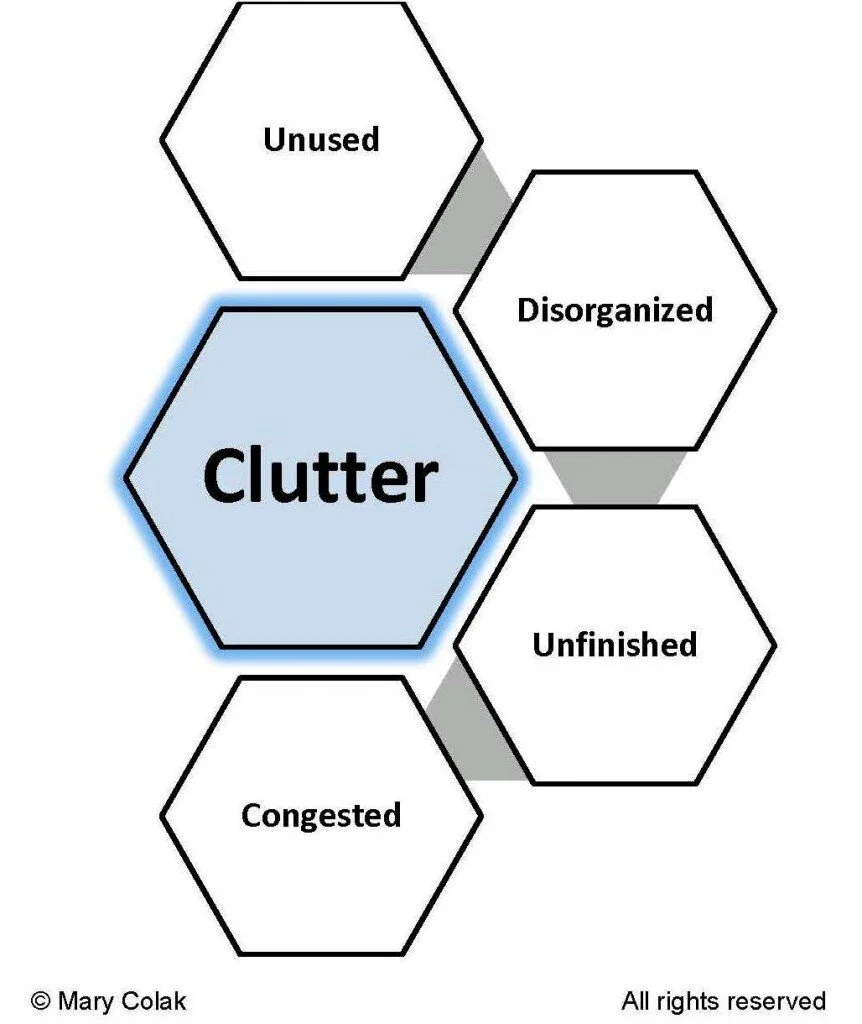Clutter: If it's organized, is it still clutter?
Understanding what constitutes clutter from an organizational perspective helps staff eliminate clutter—both electronic and physical. While experts agree that there is more to clutter than just physical and electronic space, the organization’s primary concern needs to be in these two areas and include the following categories:
Unused items. This is a collection of “things” (hardcopy papers, knickknacks, electronic files, e-mail, etc.) that are kept for “just in case” reasons. Solution: If the item does not contribute to the organization’s vision, mission, or values, discard it.
Disorganized items. This is a collection of things that are kept in piles on desks, on floors, randomly placed on surfaces, or randomly organized in electronic file folders. Solution: Conduct a purge party to organize items of value and develop a classification system for the management of records and files.
Unfinished work. This is typically seen in various “piles” of to-do’s in individual offices. If several projects are on the go, there is a good chance that at least one will not be completed on time if the individual is accustomed to gathering unfinished work. Solution: Delegate unfinished work to those who have the skills and time to complete it or outsource the project.
Congested space. When too many things accumulate in too small a space, the typical response is that more space is needed. The fact is that there is always more space than is required. Solution: Conduct a purge party to eliminate clutter from offices and computers.
To successfully rid clutter from your organization, convene a meeting to not only address the problem, but to also relay the organization’s vision, mission and values. Using these elements as a foundation, explain how clutter opposes these elements. The key is to “eliminate” clutter so that the organization achieves improved workflow and efficiency.
Moving clutter around by “organizing” it differently does nothing to solve the problem. And it is a problem—the monetary cost of clutter to organizational efficiency and productivity can be substantial.
In a 2012 survey by Forbes, 35% of workers said that they would “be ashamed if anyone caught a glimpse of their cluttered workspace” and 40% criticized co-workers for their clutter.
In addition, the average worker spends 30 minutes per day and 150 hours per year looking for information, the cost to the organization for this alone is about $4,500 per year per worker. A study by Brother International found that clutter costs U.S. corporations $177 billion annually.
While some costs of clutter may seem large (or small), other costs are not easily quantifiable. For example, what about missed meetings because of “lost” meeting notices in e-mail inboxes? Do organizations know how much business is lost each year because their employees miss (or are late) for meetings with prospective customers?
Another impact of clutter seldom considered by organizations is the amount of late fees or penalties for late bill payments. What effect do regular late payments have on your organization’s credit rating?
Privacy of information and identity theft is another consideration for organizations with clutter. When too much paper accumulates, sometimes the easy way out is to throw it out, but that creates risk for the organization. Diligently and regularly shredding unneeded documents gives customers assurance that the organization is serious about protecting their identity and confidentiality.
In addition to the monetary cost of clutter, the non-monetary cost of clutter can include stress, overwhelm, procrastination, and a myriad of other personal impacts that affect organizational wellbeing.
When environments are clutter-free, the mind is also free to be inspired with new ideas and new opportunities that will help move the organization to more profitability.

